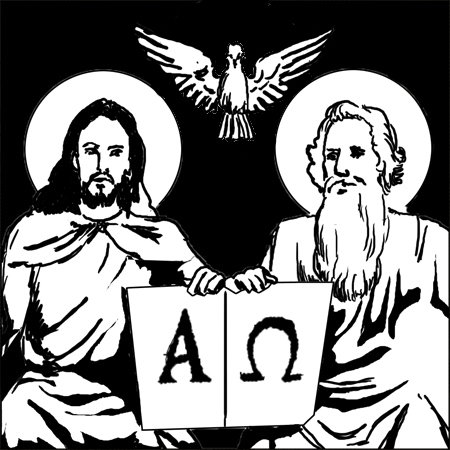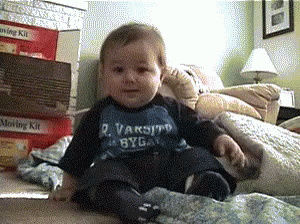 Holy Trinity, Year C
Holy Trinity, Year C
Prv 8:22-31; Rom 5:1-5; Jn 16:12-15
Introduction: This is a homily/Scripture reflection in a book, titled: ‘Every Week God Speaks We Respond’, Cycle B, intended to be published in the future by Reverend John Tran Binh Trong.
It was published in Vietnamese in the US 2008 and republished in Viet Nam 2011. To keep the author’s writing style, this homily has not been edited and may not be by a hired hand. However, if readers would like to point out mistake(s) in spelling and grammar and/or to suggest English phrases and expressions, it would be greatly appreciated by the author, whose English is not his mother tongue and who did not live in the US until his adulthood. Passive sentences are used intentionally in this context as to avoid using the first personal pronoun ‘I’ when applicable, that might be associated with any idea of egotism, in accord with the French saying, known as: ‘Le moi est haissable’ (The ego is detestable).
One of the human tendencies is curiosity, wanting to know what is hidden. Curiosity has brought about scientific discoveries and technology advancement. Theologians and religious philosophers have spent a great deal of time to explain the doctrine of one God in three persons. However, God remains a mystery. While we realize that there are three persons in one God, because the second person of the Blessed Trinity has revealed this to us, we still do not understand how this can be.
We can only use a triangle to describe the mystery of the Blessed Trinity. In an equal and symmetrical triangle, three sides are equal and three angels are equal, symbolizing three persons of the Blessed Trinity. If our mind can understand the mystery of religion, then what is called religion, is no longer religion, but merely a system of philosophy or science. The question is why we do not understand and yet we still believe? We believe because we rely on the authority of others. In this case, we believe because we rely on the testimony of Christ. He came to reveal to us the mystery of three persons in one God.
Sometimes we - parents, teachers, and priests - are anxious for not knowing how to teach the Catholic faith to our children, students and parishioners. We can teach them a lot. Yet faith and understanding are two different spheres. That is why many people know a lot about religion and scripture. However, it is not necessary that they are believers. Therefore, it is important that faith – something precious – be handed on and experienced. It is necessary that we share our faith experience with others.
Sometimes we wonder which person of the Trinity we should pray to. Our relationship with each Person of the Trinity might be different. If we have a close relationship with our human father, we should pray to God the Father more often in our prayer life. If we have experienced a personal relationship with Jesus as a brother or a friend like in a Cursillo movement, then we should pray more often to God the Son. If we have experienced a charismatic renewal, then we should pray more often to the Holy Spirit. Anyway, the Father, the Son and the Holy Spirit are one. When we pray to one Person of the Blessed Trinity that we pray to the other as Jesus confirms: I am in the Father and the Father is in me (Jn 14:11), I will ask the Father and he will give you another Paraclete - to be with you always (Jn 14:15). Everything the Father has is mine (Jn 16:15). After having prayed to each Person of the Blessed Trinity, we can switch our prayers to the Three Persons at the same time to be sure of our prayers such as oh Blessed Trinity, Father, Son and Holy Spirit, we worship you, we give you thanks and glorify your name. We ask you to grant us this or that.
For practical application, how have we taught our children to live our faith in making the sign of the cross? Have we been aware of the meaning of the sign of the cross, or have we made the sign of the cross in a mechanical way and in a routine fashion? To make the sign of the cross is to express our faith in the Blessed Trinity. To make the sign of the cross is to invoke the name of the Blessed Trinity to help us do things according to his way.
To make the sign of the cross is a way to remind us of the mystery of redemption: Jesus died on the cross for our sins. On the contrary, to make the sign of the cross in a routine fashion and in a mechanical way cannot help stir up religious experience. Moreover, did we ever teach our children to pray by themselves? When our children received their first Communion or Confirmation or Matrimony, did we encourage them to pray? Did we help them pay attention to internal preparation, or did we pay attention only to what they should wear and what and how their pictures should be taken. That is why our children do not have religious experience and spiritual impression when they received a sacrament. Not to have a religious experience, then looking at their pictures later on cannot stir up any internal impression. Picture only help keep a memory of a sacrament received. Only religious experience and spiritual impression can bring joy and inspiration to our heart in the life of faith.
A prayer asking for an awareness of the Blessed Trinity’s presence:
Oh Holy Trinity whom we adore!
How do we perform religious acts,
yet our heart is far away from you.
Grant that we may find meaning and purpose
when we pray and worship you and serve our neighbors
who are created in your image.
Where is your grace and power?
May we experience them so that we may live our faith with joy. Amen.
John Tran Binh Trong



 Every Week God Speaks – We Respond, Cycle A was published Online in the US. The introduction of the book is recorded at “Sách của Tác giả Chủ trương, Column 1.
Every Week God Speaks – We Respond, Cycle A was published Online in the US. The introduction of the book is recorded at “Sách của Tác giả Chủ trương, Column 1.

 Năm Mục Vụ Giới Trẻ 2021. HĐGM ấn định một chương trình Mục vụ Giới trẻ 3 năm với các chủ đề tương ứng: Năm 2020: Đồng hành với người trẻ hướng tới sự trưởng thành toàn diện.
Năm Mục Vụ Giới Trẻ 2021. HĐGM ấn định một chương trình Mục vụ Giới trẻ 3 năm với các chủ đề tương ứng: Năm 2020: Đồng hành với người trẻ hướng tới sự trưởng thành toàn diện. Năm Thánh Giu-se: Nhân kỷ niệm 150 năm Đức Giáo hoàng Pio IX chọn thánh Giuse làm Đấng Bảo Trợ Giáo Hội Công Giáo, Đức Phanxicô đã ban hành Tông thư “Patris corde” – Trái tim của người Cha – và công bố “Năm đặc biệt về thánh Giuse” từ
Năm Thánh Giu-se: Nhân kỷ niệm 150 năm Đức Giáo hoàng Pio IX chọn thánh Giuse làm Đấng Bảo Trợ Giáo Hội Công Giáo, Đức Phanxicô đã ban hành Tông thư “Patris corde” – Trái tim của người Cha – và công bố “Năm đặc biệt về thánh Giuse” từ  Năm “Gia đình Amoris Laetitia” 2021 về “Vẻ đẹp và niềm vui của tình yêu gia đình” do Bộ Giáo Dân, Gia Đình và Sự Sống tổ chức, được Đức Phanxicô khai mạc dịp Lễ Thánh Giuse
Năm “Gia đình Amoris Laetitia” 2021 về “Vẻ đẹp và niềm vui của tình yêu gia đình” do Bộ Giáo Dân, Gia Đình và Sự Sống tổ chức, được Đức Phanxicô khai mạc dịp Lễ Thánh Giuse 
